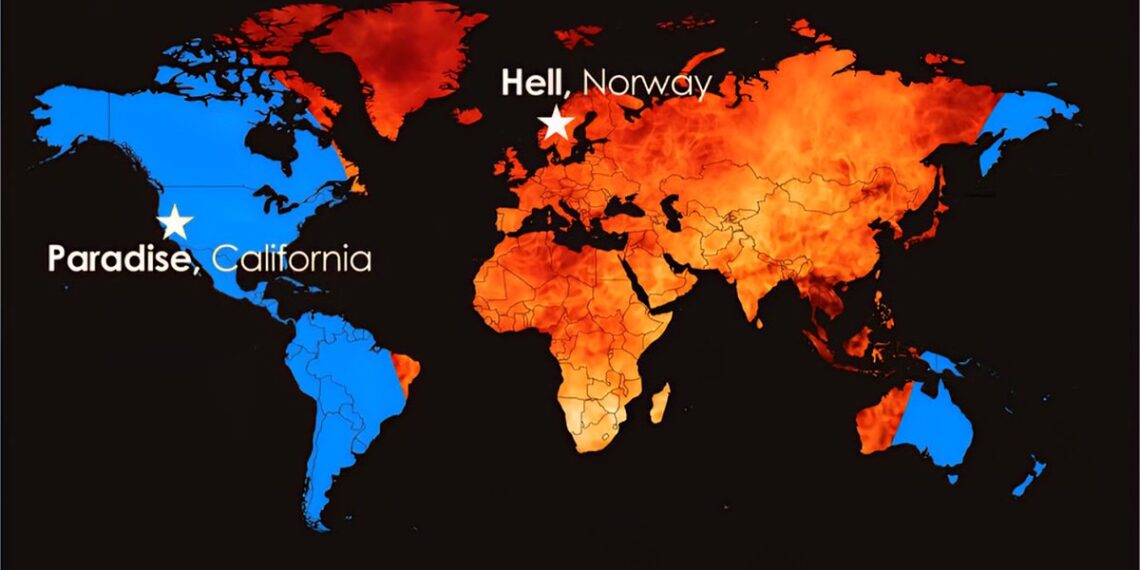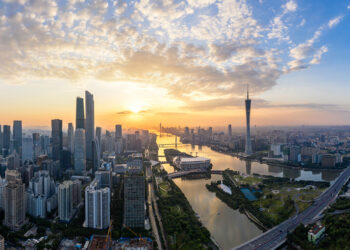Select Language:
Countries Closer to Paradise or Hell: A 2025 Global Outlook

1. Costa Rica: The Setting of Bliss or Bewilderment
Known for its lush rainforests, pristine beaches, and abundant biodiversity, Costa Rica continues to be a preferred destination for eco-tourists and nature lovers. However, recent environmental challenges threaten to tarnish its reputation. Deforestation, driven by expanding agriculture and tourism infrastructure, has taken a toll on the country’s delicate ecosystems. Despite government efforts to preserve natural habitats, illegal logging and land conversion remain pressing issues, hinting at an uncertain future for this paradise.
2. Indonesia: An Archipelago of Wonder or Woes
Spanning thousands of islands, Indonesia boasts some of the world’s most astonishing volcanic landscapes, vibrant cultures, and exotic wildlife. Yet, the nation faces critical threats, including rising sea levels and rampant deforestation. The palm oil industry, a main economic driver, often takes flak for its environmental impact, leading to concerns over habitat loss for orangutans and other endangered species. While thriving in tourism, some regions grapple with pollution and infrastructural decay, putting Indonesia’s paradise image at risk.
3. Brazil: The Land of Amazon and Anxieties
The Amazon rainforest, often referred to as the world’s “lungs,” is vital not just for Brazil but for the entire planet’s climate stability. Unfortunately, illegal logging, cattle ranching, and mining activities have intensified, causing unprecedented deforestation. Indigenous communities and global environmentalists continue to raise alarms over the rapid shrinking of this vital ecosystem. As Brazil grapples with political turmoil and economic pressures, safeguarding its natural treasures becomes increasingly challenging, threatening to push this tropical haven closer to environmental hell.
4. India: A Land of Diversity or Disaster
India’s diverse landscapes—from the Himalayas to coastal beaches—are renowned worldwide. Nevertheless, rapid urbanization, industrial pollution, and water scarcity threaten to turn some of its picturesque sites into environmental hazards. Cities like Delhi face life-threatening air quality issues, while water bodies are increasingly polluted, impacting millions. Ongoing efforts toward sustainable growth face setbacks, making India’s future as a natural paradise uncertain, especially in densely populated regions.
5. Australia: Rugged Beauty or Reckless Neglect?
Australia’s remarkable coastline, unique wildlife—including kangaroos, koalas, and the Great Barrier Reef—make it a standout destination for nature lovers. However, climate change has led to devastating bushfires, coral bleaching, and rising temperatures. Recent years saw the worst-ever wildfires, destroying vast sections of habitat and displacing communities. While Australia is investing in conservation initiatives, the ongoing environmental crises cast doubt on whether this continent can maintain its ecological treasures in the coming decades.
6. United States: Natural Splendor or Environmental Struggles
From the Grand Canyon and Yellowstone to the sunny beaches of California and Florida, the U.S. boasts diverse natural wonders. Yet, climate change-induced disasters—wildfires, hurricanes, and droughts—are increasingly impacting these regions. Urban sprawl and pollution exacerbate these issues, threatening the country’s environmental integrity. Despite advances in renewable energy and conservation efforts, the U.S. continues to battle balancing development with environmental preservation, risking the loss of some of its most cherished landmarks.
7. Madagascar: Unique Paradise or On the Brink
Home to over 90% of its species found nowhere else on Earth, Madagascar is a biodiversity hotspot with surreal landscapes and endemic wildlife such as lemurs. However, illegal logging, slash-and-burn farming, and political instability threaten its delicate ecosystems. Conservation organizations report alarming rates of habitat loss, urging urgent action. Madagascar’s future as a paradise for unique species largely hinges on international cooperation and sustainable development efforts.
8. Thailand: Tropical Bliss or Turmoil
Famous for its stunning beaches, vibrant street life, and rich cultural heritage, Thailand remains a top tourist destination. Nevertheless, environmental degradation, including coral reef destruction and pollution in major cities, challenges its image. Rapid tourism growth has led to increased waste and resource depletion in popular spots like Phuket and Koh Phi Phi. The government and local communities are actively working to implement greener policies, but the battle to protect Thailand’s natural beauty continues.
In 2025, the world stands at a crossroads where the line between paradise and hell is increasingly blurred due to human activities and climate change. While many nations still hold the potential to be idyllic refuges, pressing environmental issues threaten their sustainability. The global community’s collective efforts to prioritize conservation, sustainable development, and climate resilience will determine whether these countries truly remain closer to paradise or slide further into environmental despair.







